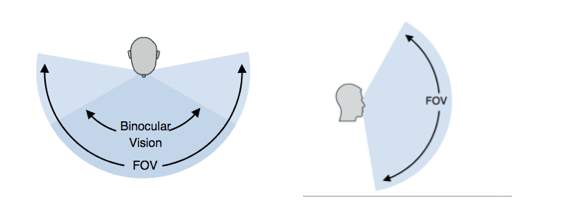PUBLICATION
Introduction
Which of these animals have eyes most similar to yours?
Incorrect! Horses have an impressive 350 degrees of monocular vision. This is due to their eyes being positioned on the side of their head which allows them to see almost all the way behind themselves.
Correct! Sharks and humans share many similarities in structure when it comes to eyes. So much so, that shark corneas are sometimes used in cornea replacement surgery in humans.
Incorrect! Frogs have eyes that are good for tracking movement but they effectively can not perceive still objects. A frog will starve even if surrounded by dead flies.
This brings us to the subject of what contributes to vision satisfaction.
What about shark eyes?
Unlike humans, sharks have a layer of mirrored crystals behind their retina. These crystals work like a natural transition lens which enables the shark to maintain a clear vision in different water conditions.
What is vision satisfaction to sharks?
For sharks, vision satisfaction equals survival. Their sharp vision allows them to catch their prey.
Vision Satisfaction
For us, vision satisfaction is primarily about these 3 dimensions.
Vision Satisfaction: Spatial Awareness
Spatial Awareness
Spatial awareness is about the visual field and depth perception.
Our eyes have a horizontal FOV of about 135 degrees and a vertical FOV of just over 180 degrees depending on the anatomy of our skull. This means our eyes capture a distorted wide angle image which our brain reconstructs into a 3D mental image that is distortion-free.

Depth perception refers to the ability to assess the distance of objects within the environment.

Vision Satisfaction: Discriminating Efficiency
Resolution
Chromatic Contrast
Motion Detection
Stereoacuity
Vision Satisfaction: Visual Endurance
Patients expect the same seamless, comfortable vision at any point in time, regardless of the task or environment. Specifically, they expect a lack of awareness of their spatial and discriminating vision efficiency. However, humans are able to notice changes and ignore constant, stable stimuli.
Consequently, any biological or environmental factors that change vision quality is seen as an inconvenience or discomfort.
Examples of such factors are prolonged near work, digital device use or night driving. Prolonged near tasks and digital devices present issues such as ocular dryness due to reduced blinking. Night driving issues vary from noticing lane demarcations or reading street signs to the glare from incoming headlights.










